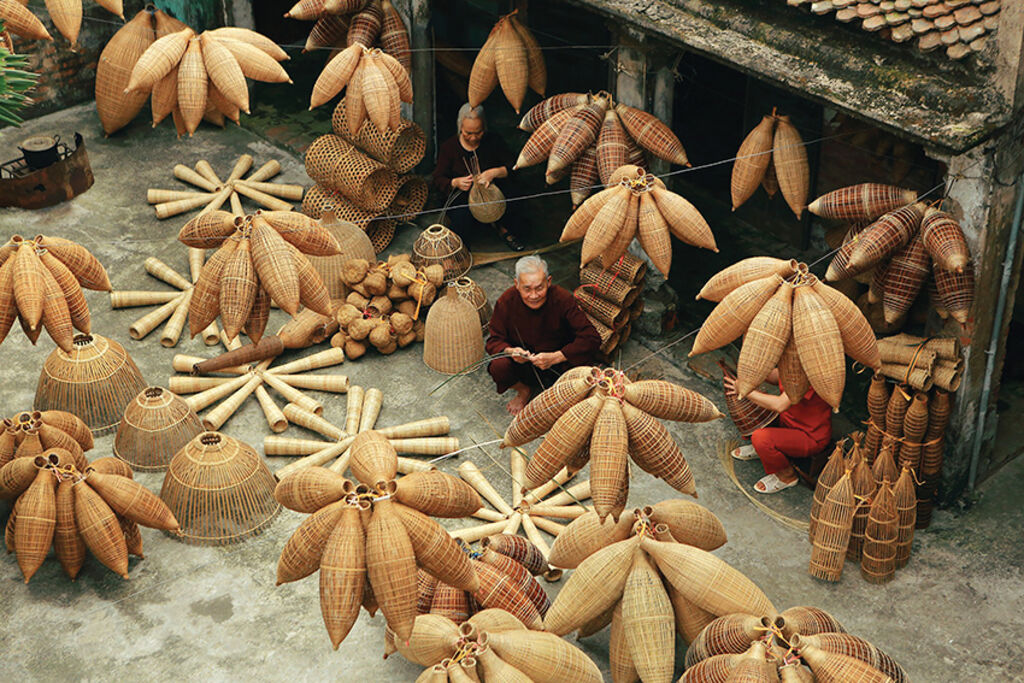 |
| Various types of fish and shrimp traps made by Thu Sy villagers__Photo: VNA |
Strolling through Thu Sy village in Tien Lu district, Hung Yen province, visitors can see the elders sitting in front of their houses weaving fish and shrimp traps while sharing stories and laughter.
Located around 60 kilometers from Hanoi, Thu Sy village has garnered a well-deserved reputation for its centuries-old tradition of hand-woven bamboo fish and shrimp traps, called do or ro in Vietnamese. These intricately crafted traps have long been used to harvest the bounty of rivers, lakes and streams throughout northern Vietnam.
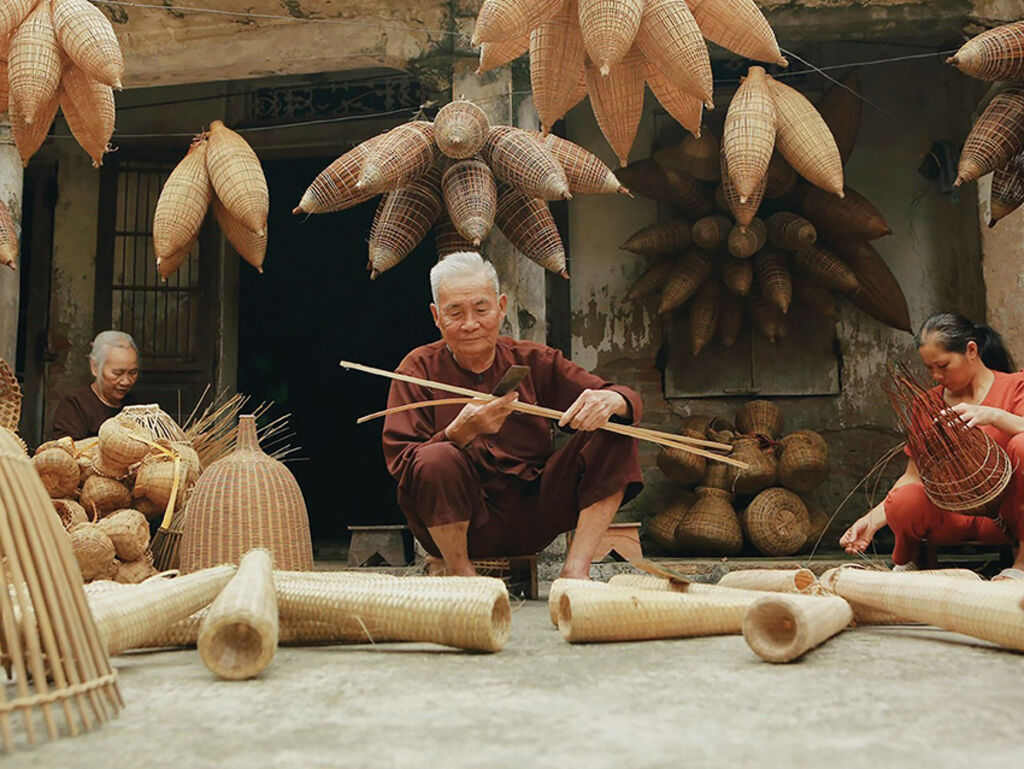 |
| Cleaving bamboo stems__Photo: VNA |
Thu Sy villagers believe that it was Tutelary Goddess Nguyen Thi Hue who taught them the craft of hand weaving fish traps more than two centuries ago. Over time, the craft evolved, allowing villagers to create traps with different shapes and sizes, perfect for catching not only fish but also shrimps, crabs and even eels.
 |
| Weaving an elongated ellipsoidal fish trap__Photo: VNA |
Eighty-five-year-old Luong Son Bac, the oldest and most skillful craftsman in the village, has devoted 77 years to the weaving craft. According to him, the key to creating beautiful and durable traps lies in selecting mature bamboo. In the past, Thu Sy villagers used locally grown bamboo but today they source it from Yen Bai and Thanh Hoa provinces.
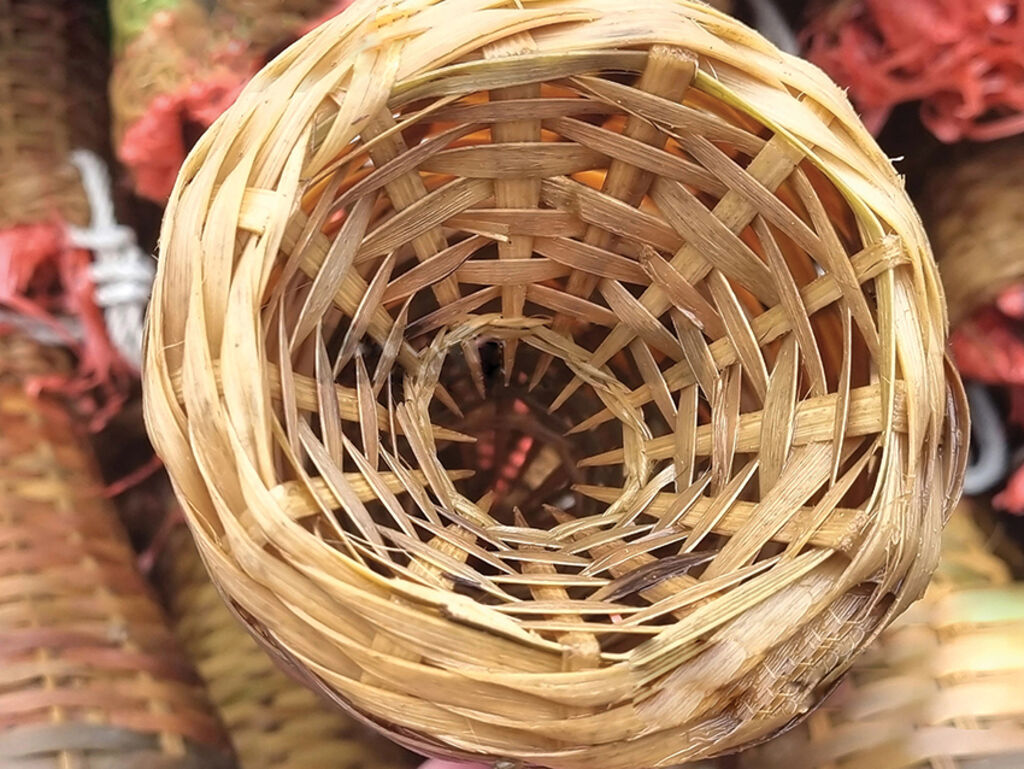 |
| A funnel in a trap’s mouth__Photo: VNA |
Bamboo stems will be split into thin, flat strips of varying sizes depending on the trap’s purpose. Notably, the strips used to weave fish traps are thinner than those used for shrimp traps. These strips are then meticulously sun-dried, soaked in limewater, and finally smoked over rice straw. These steps will be repeated thrice to help bamboo strips achieve dark puce color and make the traps more durable and termite-resistant.
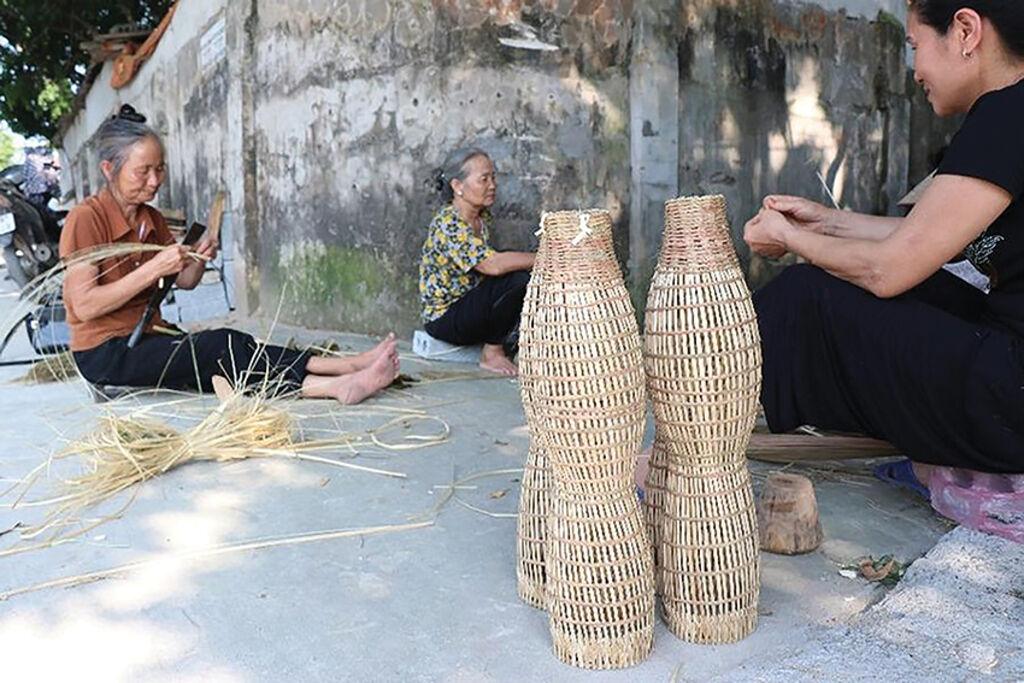 |
| A shrimp trap called ro__Photo: VNA |
There are various types of fish traps - do and shrimp traps - ro. Do often take the shape of an elongated ellipsoid with a small round mouth and a tapering end. Meanwhile, ro look like a cylinder with a cone-shaped funnel in its mouth and a lid. Like other traditional handicrafts, bamboo weaving demands ingenuity, patience and meticulousness. It is quite simple to weave the mouth of the trap while the funnel and the end present the greatest challenge. The weaving techniques for do and ro are quite similar but there is a key difference. To make a do, the weaver must first create a frame and then weave from the center of the frame outward. In contrast, when weaving a ro, the weaver starts by creating the mouth fitted with a cone-shaped funnel and weaves upward to create the trap’s body and finishes with the locked end and a lid.
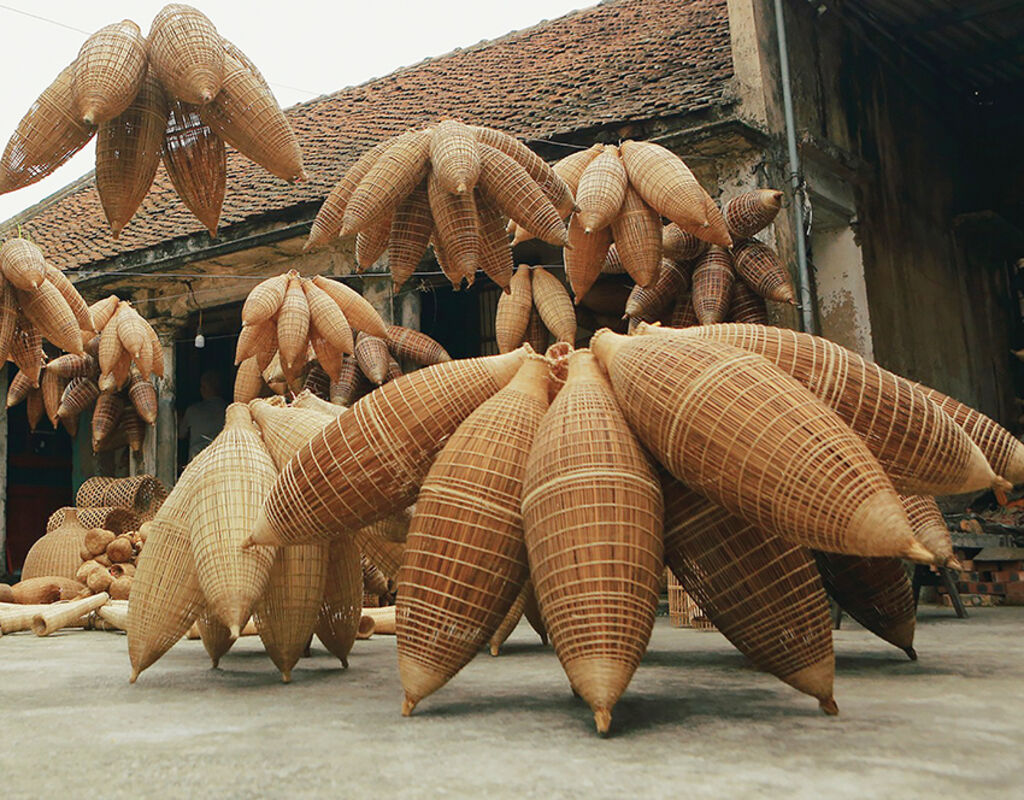 |
| The do have been completed__Photo: VNA |
It usually takes an experienced weaver almost an hour to weave a trap. Afterward, traps will be either sun-dried or fumigated above stoves in order to become more durable.
 |
| Traps are fumigated above stoves__Photo: VNA |
Today, just few farmers use do and ro to catch fish or shrimps. These items are now used mostly for interior decoration, creating a reminiscence of the countryside life of Vietnamese people in the past.-









